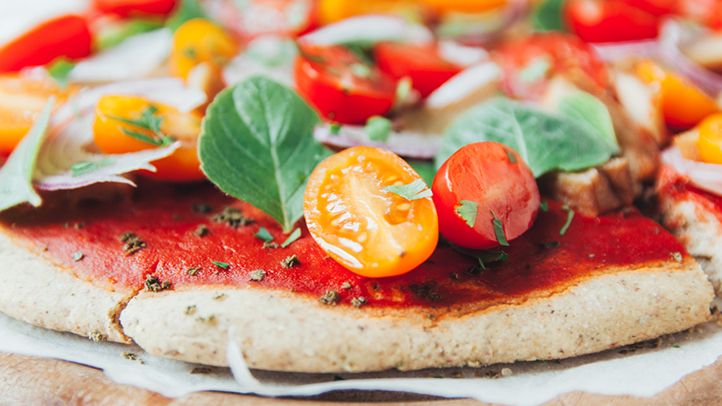Pizza and Health: Debunking Common Myths and Making Healthier Choices

Introduction:
Pizza is one of the most popular foods in the world. It’s a versatile dish that can be customized with various toppings and enjoyed on its own or with sides. Despite its popularity, there are some common misconceptions about pizza being an unhealthy food. In this blog post, we’ll debunk some of these myths and highlight ways to make healthier pizza choices.
Myth #1:
Pizza is always high in calories and fat Contrary to popular belief, not all pizza is created equal. The calorie and fat content of pizza depends on the type of crust, sauce, cheese, and toppings used. For example, a thin crust pizza with vegetable toppings can be a healthier option compared to a deep-dish pizza loaded with cheese and meat toppings.
Making Healthier Pizza Choices Here are some tips for making healthier pizza choices:
- Opt for thin crust: Thin crust pizzas are generally lower in calories and fat compared to thick crust pizzas. They also tend to have a higher ratio of toppings to crust, making them more nutrient-dense.
- Choose vegetable toppings: Vegetables are packed with nutrients and fiber, and they add flavor and texture to your pizza. Some healthy topping options include spinach, mushrooms, bell peppers, onions, and tomatoes.
- Limit cheese: Cheese is a significant source of saturated fat and calories in pizza. To reduce the calorie and fat content of your pizza, limit the amount of cheese you use. You can also opt for lower-fat cheese varieties like part-skim mozzarella or use alternative toppings like pesto or tomato sauce.
- Add lean protein: Adding lean protein sources like chicken, turkey, or shrimp to your pizza can increase its nutritional value and make it more filling.
- Watch portion size: It’s essential to watch your portion size when it comes to pizza. Stick to one or two slices and pair it with a side salad or roasted vegetables for a balanced meal.
Myth #2:
Pizza is not a nutritious food While pizza may not be the most nutrient-dense food, it can be a part of a healthy diet when consumed in moderation and with healthy toppings. Pizza can be a good source of carbohydrates, protein, fiber, and vitamins and minerals, depending on the toppings and crust used.
Nutritious Pizza Toppings Here are some nutritious pizza topping ideas:
- Veggie Lover’s Pizza: A pizza loaded with vegetables like mushrooms, onions, bell peppers, spinach, and tomatoes is a nutritious and flavorful option.
- Margherita Pizza: A simple pizza with tomato sauce, fresh basil, and mozzarella cheese is a classic Italian favorite that’s lower in calories and fat.
- Greek Pizza: A pizza topped with spinach, feta cheese, tomatoes, olives, and chicken or shrimp is a nutritious and satisfying meal.
- BBQ Chicken Pizza: A pizza with a barbecue sauce base, grilled chicken, red onions, and cilantro is a delicious and protein-packed option.
Conclusion:
Pizza can be a part of a healthy diet when made with nutritious toppings and consumed in moderation. By choosing thin crust, vegetable toppings, and limiting cheese, you can enjoy a healthier slice of pizza. Experiment with different topping combinations and have fun making your perfect pizza. Remember to watch your portion size and pair your pizza with healthy sides to create a balanced meal.
Leave A Reply